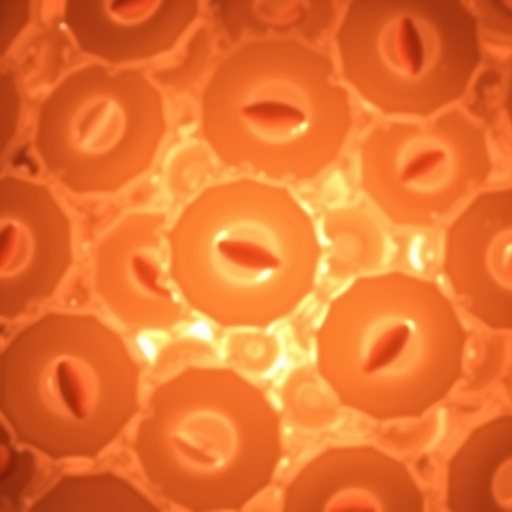The intricate relationship between cumulus cells and oocyte quality is gaining renewed attention in reproductive science, as recent advancements shed light on the complexities of female fertility. The latest systematic review by Rohn et al. has outlined the functional role of cumulus cells, emphasizing their potentially vital influence on oocyte quality, a critical determinant in successful fertilization and subsequent embryonic development. This extensive analysis provides a platform to understand how cumulus cells contribute to the overall health of oocytes, thus affecting fertility outcomes.
Cumulus cells, which are associated with oocytes within ovarian follicles, have long been overlooked in fertility discussions. Traditionally, focus has primarily been placed on the oocyte itself; however, recent evidence suggests that these supportive granulosa cells possess multifunctional roles that are fundamental to oocyte maturation. This is pivotal, as the health of oocytes—potentially impacted by their microenvironment—plays an essential role in ensuring normal fertilization and embryo formation.
One of the notable findings of Rohn et al.’s review is the way cumulus cells communicate with oocytes. This communication occurs through the exchange of molecular signals, which are crucial for oocyte development. Cumulus cells produce various growth factors and hormones that not only nurture the oocyte but also assist in the regulation of its maturation. This exchange establishes a local microenvironment that optimizes the conditions for successful fertilization.
Moreover, the review highlights the role of cumulus cells in the acquisition of oocyte competence. The term ‘competence’ refers to the ability of the oocyte to undergo successful fertilization and subsequent development. It has been shown that cumulus cells can influence gene expression in oocytes, thereby enhancing their developmental potential. This is significant because a competent oocyte is more likely to lead to a viable pregnancy, underscoring the importance of cumulus cells in reproductive biology.
In addition to their supportive function, cumulus cells also play a role in the metabolic processes of oocytes. The review discusses how these granulosa cells contribute to the metabolic energy supply needed for oocyte maturation, which is crucial for maintaining oocyte viability. By facilitating the conversion of metabolites and ensuring a rich energy supply, cumulus cells ensure that oocytes are adequately prepared for their role in reproduction.
Another critical aspect covered in the review is the hormonal signals that cumulus cells receive and transmit. These signals are instrumental in synchronizing the oocyte’s development with the overall hormonal milieu of the female reproductive system. Disruptions in this hormonal communication can lead to compromised oocyte quality, showcasing the delicate balance required for optimal reproductive function. By understanding these signaling pathways, researchers can explore new therapeutic avenues for addressing infertility.
Interestingly, the review also delves into the differences in cumulus cell behavior across species. While much of the existing research has traditionally focused on a limited range of model organisms, Rohn et al. emphasize the importance of comparative studies. Understanding the differences and similarities in cumulus cell function across species can provide valuable insights that may enhance fertility treatment strategies in humans.
In clinical settings, the implications of these findings are substantial. Assisted reproductive technologies (ART), such as in vitro fertilization (IVF), depend heavily on the quality of both oocytes and the surrounding cumulus cells. By applying insights from the review into clinical practice, fertility specialists can potentially improve the selection of oocytes for ART, ultimately enhancing pregnancy rates and outcomes.
The research also opens the door to exploring the impact of lifestyle factors on cumulus cell function and, by extension, oocyte quality. Factors such as diet, environmental toxins, and stress could play a role in shaping the health of ovarian follicles and their associated cumulus cells. This presents an opportunity for future research to investigate how lifestyle interventions might influence fertility by targeting cumulus cells.
Moreover, the emerging role of cumulus cells as biomarkers of oocyte quality presents an exciting prospect for reproductive health. By identifying specific markers within cumulus cells, researchers could develop non-invasive methods for assessing oocyte quality, thereby improving choices in ART and personalized treatment approaches for fertility.
The review underscores the need for continued research into the multifaceted roles of cumulus cells in oocyte biology. As new methodologies and technologies are developed, our understanding of these granulosa cells and their contributions to reproductive success will continue to evolve. There remains a vast potential for harnessing this knowledge to address the global challenge of fertility issues.
Dr. Rohn and her team provide a powerful reminder that fertility is a complex interplay of many factors, and that the focus should not only be on the oocyte but also on the supportive cells that surround and nurture it. The insights gleaned from this systematic review will undoubtedly contribute to future studies that may pave the way for novel interventions aimed at improving reproductive health.
In summary, the review by Rohn et al. emphasizes that cumulus cells are not just passive bystanders in the reproductive process; they are active participants that play critical roles in enhancing oocyte quality. As our understanding of their functions and mechanisms grows, so too does the potential to improve fertility outcomes for individuals struggling with infertility.
This vital research will likely inspire more comprehensive studies that explore the various dimensions of cumulus cell dynamics and their implications for reproductive health. As science continues to unravel the intricacies of human reproduction, the contributions of cumulus cells will undoubtedly be recognized as a cornerstone of reproductive success.
Subject of Research: The influence of cumulus cells on oocyte quality and their functional roles in female fertility.
Article Title: The Functional Role of Cumulus Cells and Their Influence on Oocyte Quality: A Systematic Review.
Article References:
Rohn, M.C.H., Simeone, J.M., Doctorman, S. et al. The Functional Role of Cumulus Cells and Their Influence on Oocyte Quality: A Systematic Review. Reprod. Sci. (2025). https://doi.org/10.1007/s43032-025-01940-5
Image Credits: AI Generated
DOI: 10.1007/s43032-025-01940-5
Keywords: Cumulus cells, Oocyte quality, Fertility, Reproductive health, Assisted reproductive technologies.




